“Friends will be friends,” sang the unforgettable Freddie Mercury. Words set to music that years later continue to express a simple and powerful truth: in life’s challenges, in moments of joy but especially in moments of difficulty, it is good to know you can count on someone. An outstretched hand, a shared laugh; sometimes a glance is enough to understand each other. Friendship does not need grand gestures, but small things; it is a bond that goes beyond time, distances and differences. Friendship, the real kind, does not demand, but welcomes. It does not judge, but understands. And in a fast-paced world, where connections seem increasingly virtual and superficial, true friends are an anchor, a certainty. And they are good for the heart.
In roughly the same years that Freddie Mercury sang Friends will be friends, give or take a year, Anthony Kennedy Shriver, a student at Georgetown University, founded the Best Buddies program, literally “Best Friends,” in 1987: a truly organized program schedule aimed at helping children with intellectual disabilities in the Washington area by giving them attention and time. “It’s much more than a socialization program,” Shriver declared in an article devoted to the initiative published in The Hoya newspaper in October 1987. “We want to bring these children out of their little world and into the wider world.” For the most part, in fact, these children were confined to foster homes. By the time the article was published, there were already fifty Georgetown University students involved in the program, which involved spending at least two days a month with their “little buddies,” their little friends, doing various activities together, such as participating in or attending local sporting events. “The students are driven by nothing more than the desire to help others,” Shriver explained.
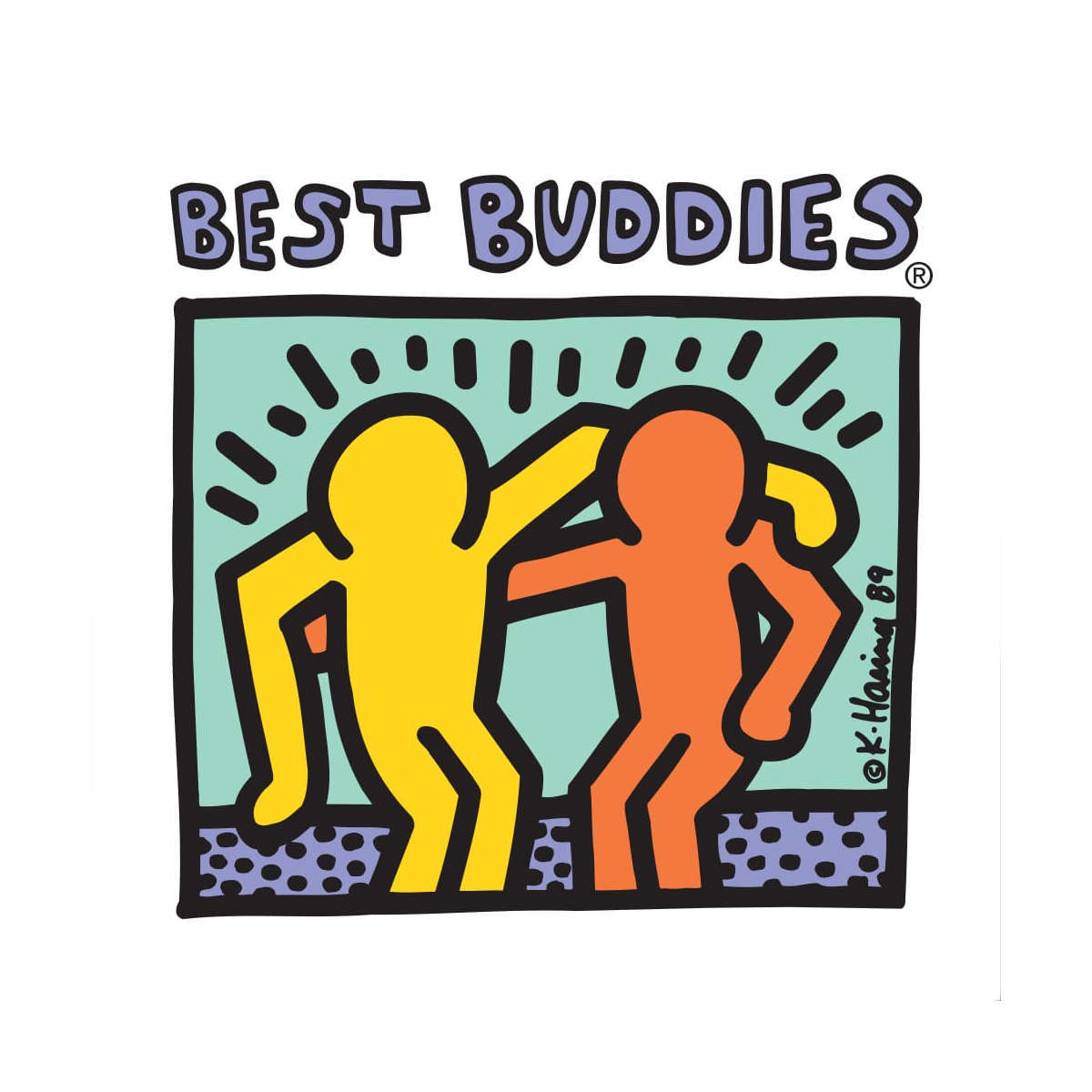
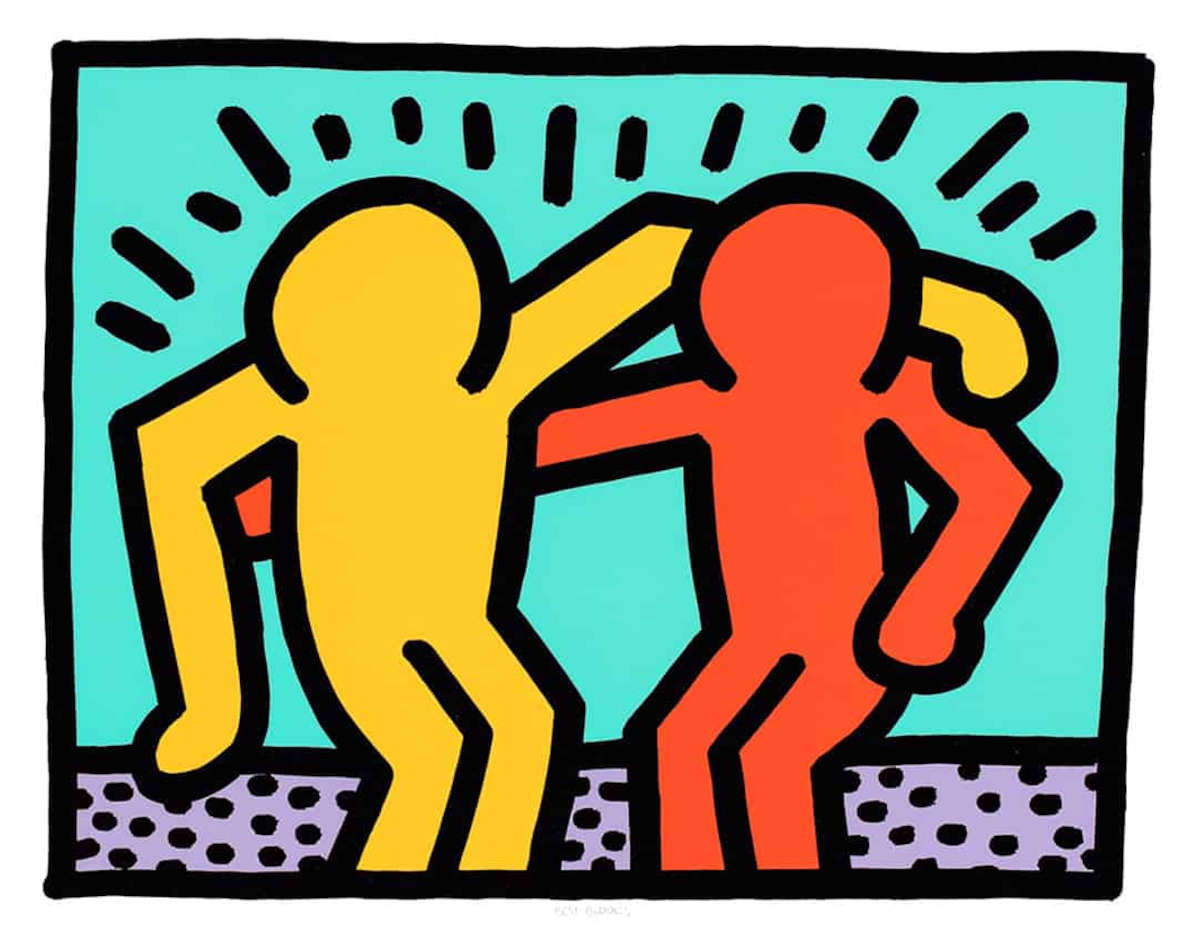
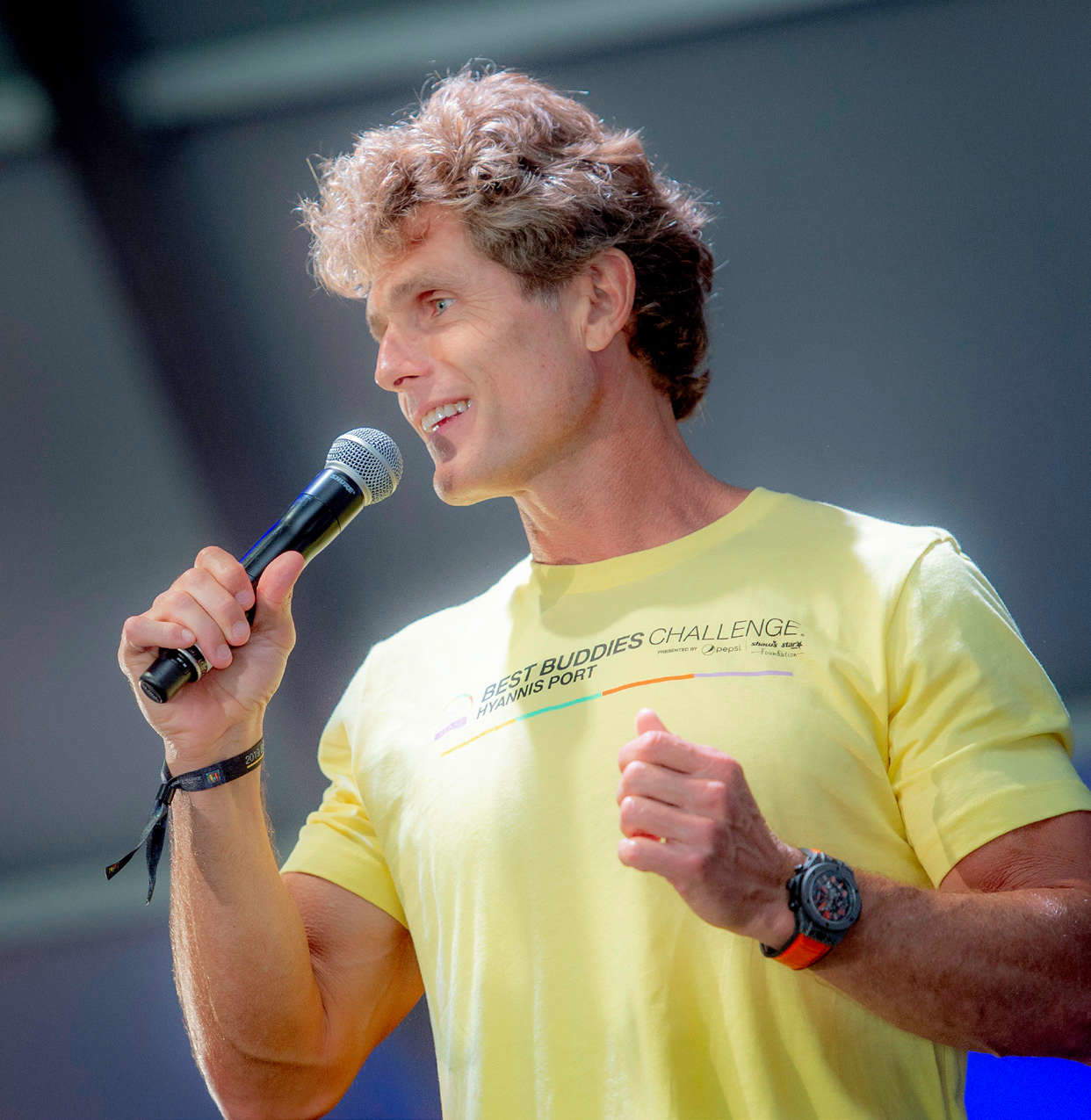
Two years later, in 1989, Best Buddies was incorporated as a nonprofit organization, becoming America’s first national, unified, social and recreational program for people with intellectual disabilities, aimed at promoting friendships between people with and without intellectual and developmental disabilities. Today it is a major nonprofit organization with a growing international reach across six continents, building on a global volunteer movement with the goal of creating opportunities for friendships, integrated employment, inclusive living and family support for people with intellectual disabilities. But it all started with the volunteer program devised by Shriver, which prompted college students like him to personally collaborate.
Even before official recognition, however, a logo was needed, and this is where another beautiful story of friendship comes in. Anthony Kennedy Shriver admired and followed Keith Haring’s art even at that time, but he did not know him personally; he was convinced that Haring was the perfect artist to create the first Best Buddies image. For him, he was in fact an extraordinary visual communicator, capable of conveying universal messages in a direct, immediate and accessible way to everyone. And so he met him in his New York studio. “He didn’t know me personally,” Shriver recounts on the official Best Buddies International website, "but he had a family member with special needs and understood the importance of Best Buddies’ mission. He knew what it meant to have a friend in his life and in the life of his family member. He told me right away that he wanted to help."
And indeed, the image conceived and created by Keith Haring, then immediately donated to Best Buddies to become the organization’s official logo (now licensed, managed and monitored by the Keith Haring Foundation of New York), comes through immediately, with its clarity and power. Two of its signature radiant little men embrace: it is a vibrant, colorful image that perfectly conveys not only Best Buddies’ mission of friendship, but the very concept of friendship itself. "It is hard to imagine an artist who could have captured the spirit and mission of Best Buddies better than he does,“ these are the words of Anthony Kennedy Shriver. ”His artwork is so simple and perfect in capturing the concepts of friendship, togetherness and mutual aid. Just look at the Best Buddies logo and your heart beats a little faster-you can feel the power of friendship come to life right before your eyes. I will always be indebted to Haring for his creative genius and generosity."
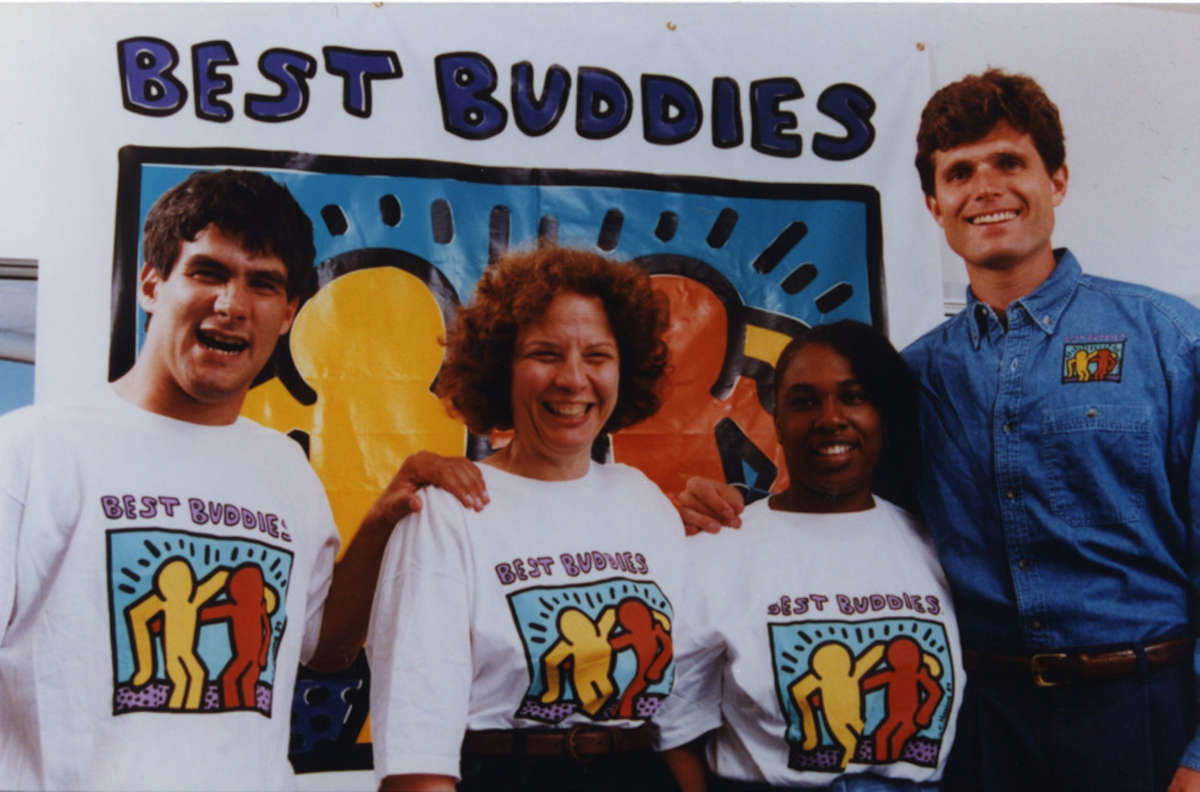
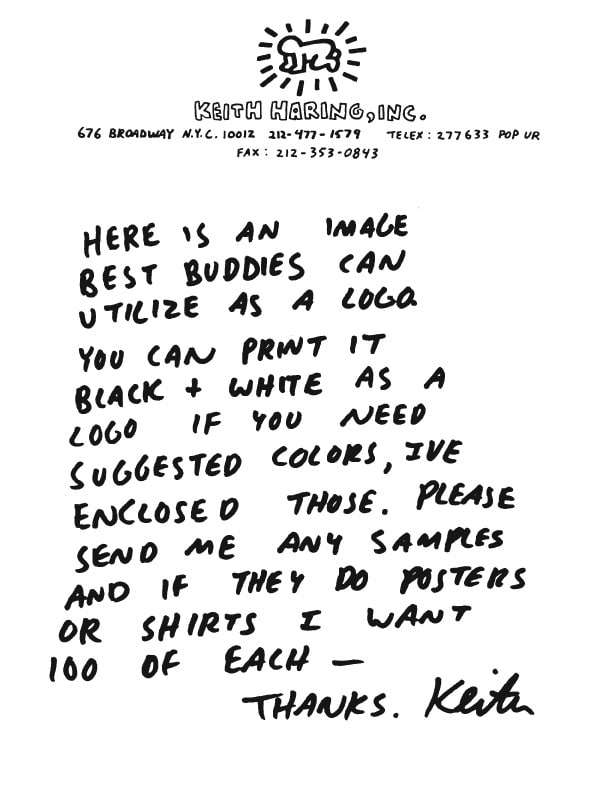
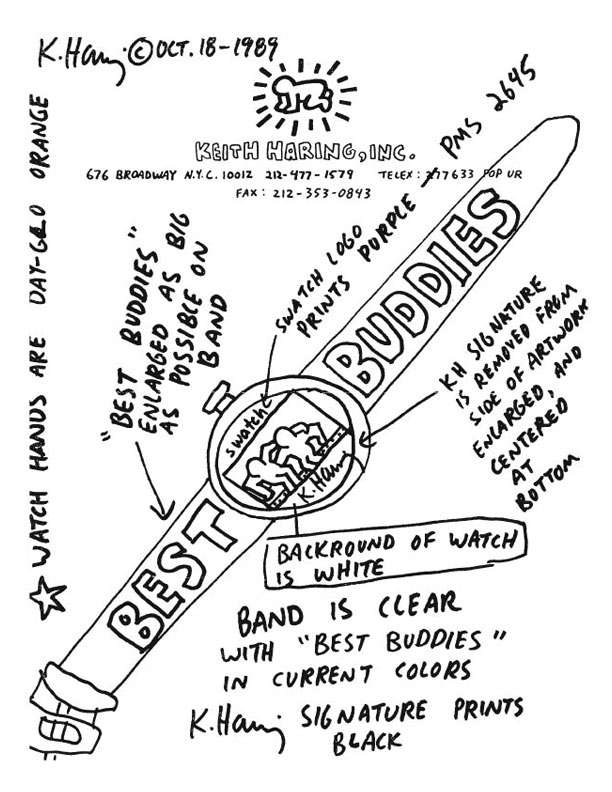
The image, which has become a work of art in its own right, is in fact an ode to universal friendship. Its expressive power lies precisely in its ability to transcend all distinctions of gender, geographical origin, age or cultural affiliation. The two figures depicted appear deliberately undefined: no physical or symbolic characteristics can be recognized that would allow them to be precisely identified, and this very fact reinforces the message of inclusiveness and equality. Wrapped in an embrace that conveys a deep sense of affection, intimacy and complicity, the two figures seem to belong to a suspended, undefined time and space. The place where they are is not recognizable: it could be anywhere or nowhere. One senses, perhaps, that they are talking.
It is an image in which outward features do not matter, but the essence of the shared gesture does: an embrace that breaks down all barriers and becomes the universal language of friendship.
“No man is an island,” wrote the English poet John Donne as early as the seventeenth century, emphasizing how no human being can live in isolation, without ties to others. We are not islands: we are archipelagos, made up of relationships, of affections, of encounters that define us and make us whole. And perhaps it is precisely in the silent embrace between two undefined figures, in an image that transcends identities and boundaries, that we can see the purest essence of this bond: friendship as the universal language of the human, because no one should ever face the world alone.
Warning: the translation into English of the original Italian article was created using automatic tools. We undertake to review all articles, but we do not guarantee the total absence of inaccuracies in the translation due to the program. You can find the original by clicking on the ITA button. If you find any mistake,please contact us.